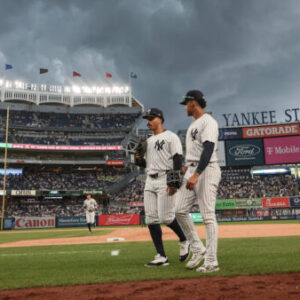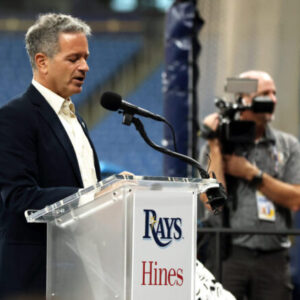You really could have seen this one coming. Pirate righty starter Paul Skenes was the first overall pick in the 2023 draft, was laughably unhittable in 27 1/3 minor league innings to start 2024 (0. 99 ERA, 45/8 K/BB ratio) and then diced through major league hitters to the tune of a 11-3, 1.

96, record and a 170/32 K/BB in 133 innings. This culminated in Skenes being named NL Rookie of the Year yesterday, copping 23 of 30 1st place votes. There’s really nothing controversial about this.
In fact, despite falling 29 innings short of qualifying for the ERA title, he was named a finalist for the NL Cy Young Award, the winner of which will also be announced this week. But what if I told you that there was perhaps an even better rookie in the National League this season? Padres’ CF Jackson Merrill – who got the other 7 1st place votes – was a first round pick (27th overall) in the 2021 draft out of a Maryland high school.
He exclusively played shortstop in the minor leagues, but made the Padres’ big league club somewhat unexpectedly this past spring as a center fielder. Unlike Skenes, he started and ended the season in the big leagues, and qualified for the batting title with 594 plate appearances. Unlike Skenes, he played for a winning club, that advanced to the NL playoffs before losing to the eventual World Series champion Los Angeles Dodgers.
He was the best player by just about any measure on a star-studded, big payroll team. At the end of the season I make my own selections for the MVP and Cy Young awards in both leagues, utilizing my own batted ball-based methods. For both hitters and pitchers, I take all batted balls, projected what the results “should have” been based upon their exit speed/launch angle, resulting in a player’s Adjusted Contact Score.
I then add back Ks and BBs to determine “Tru” Production+ (for hitters) and “Tru” ERA- (for pitchers). I then spread those results across plate appearance/innings bulk to calculate “Tru” Hitter/Pitcher Runs Above Average. For hitters, I then add Fangraphs baserunning/fielding runs to calculate “Tru” Player Runs Above Average.
Since the methods for both hitters and pitchers are virtually identical, one can legitimately compare hitters and pitchers on the same scale. Typically, an MVP-caliber hitter (like Shohei Ohtani – 72. 5 TPRAA – and Aaron Judge this season) far outdistance a Cy Young-caliber pitcher (like Chris Sale – 31.
8 TPRAA – and Tarik Skubal this season). But once you leave the very top of the ballot, things start to get interesting. Merrill finished 4th in my final NL MVP analysis this season with 31.
6 TPRAA. He was the complete package, bringing strongly positive offensive, defensive and baserunning value to the table as a 21-year-old. He never appeared overmatched, and actually got stronger as the season went on in the crucible of a pennant race.
I have absolutely nothing bad to say about Skenes. Despite getting a late start, he finished 3rd in my final NL Cy Young analysis this season with 26. 2 TPRAA.
Yes, I did him a solid by dispensing with my general ERA qualifier requirement for award consideration. But hey, considering that he was qualitatively the best starter in the NL (his 57 “Tru” ERA- bettered the other two finalists – Sale at 61 and Wheeler at 69) it’s the least I could do. If Skenes started the season in the big leagues and pitched at the same level, his TPRAA figure would have topped Merrill’s.
But it didn’t. Skenes does all the things you want an ace pitcher to do – his K rate was elite and his BB rate solidly above average. His contact management performance was exceptional – his 81 Adjusted Contact Score would have made him the NL Contact Manager of the Year had he pitched enough innings.
Lastly, there’s no reason to believe he shouldn’t be exceedingly durable and make a run at 200 innings pitched in the near term, barring injury. Skenes is absolutely wonderful. But everyone knows this, and I’m not sure that the same applies to Merrill’s campaign, which arguably might have been even greater.
The 4th best position player in a given league tends to have created more value than its 3rd best starting pitcher in just about any season, and 2024 in the National League is no exception. This post was originally published on this site be sure to check out more of their content.





